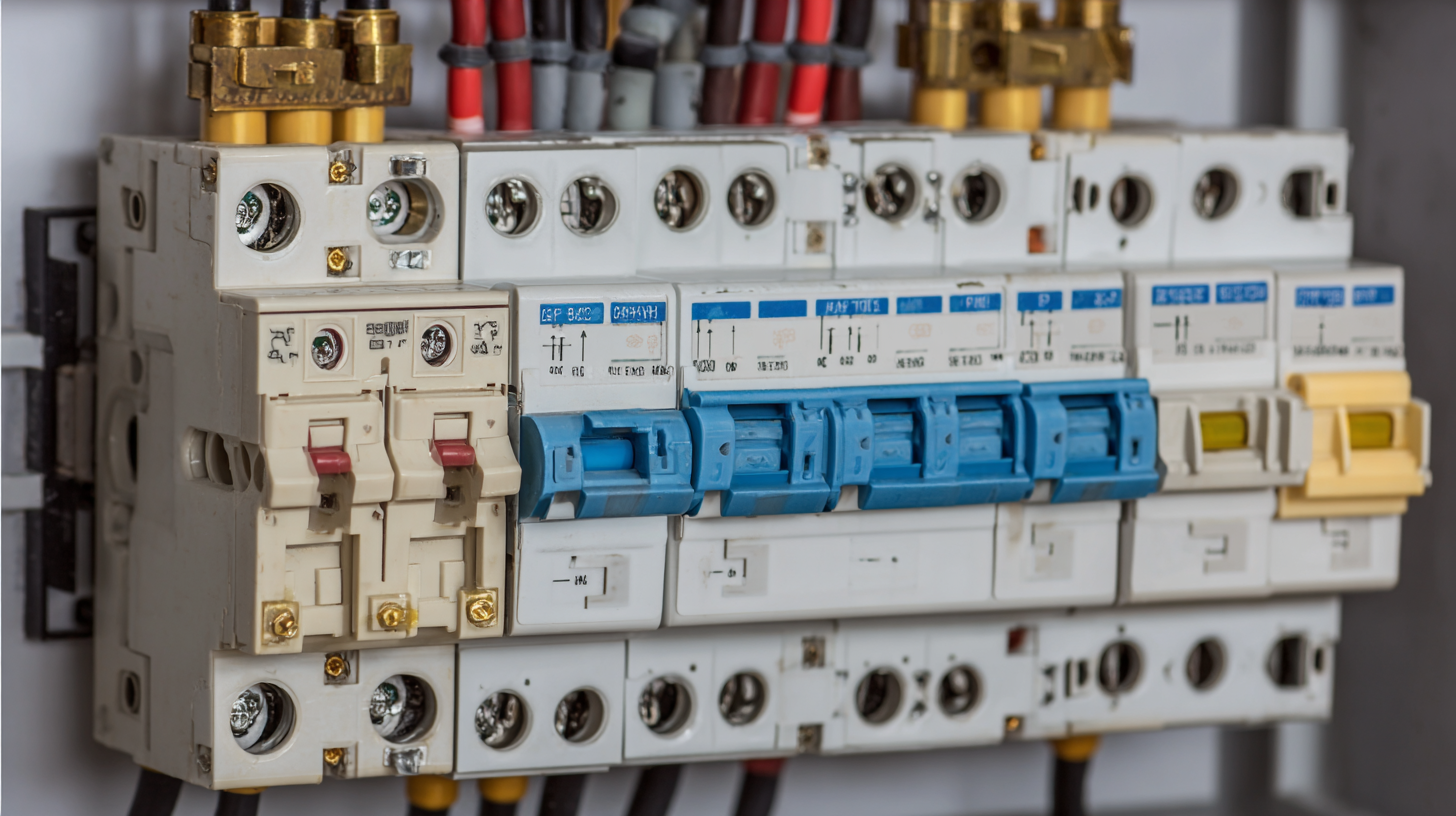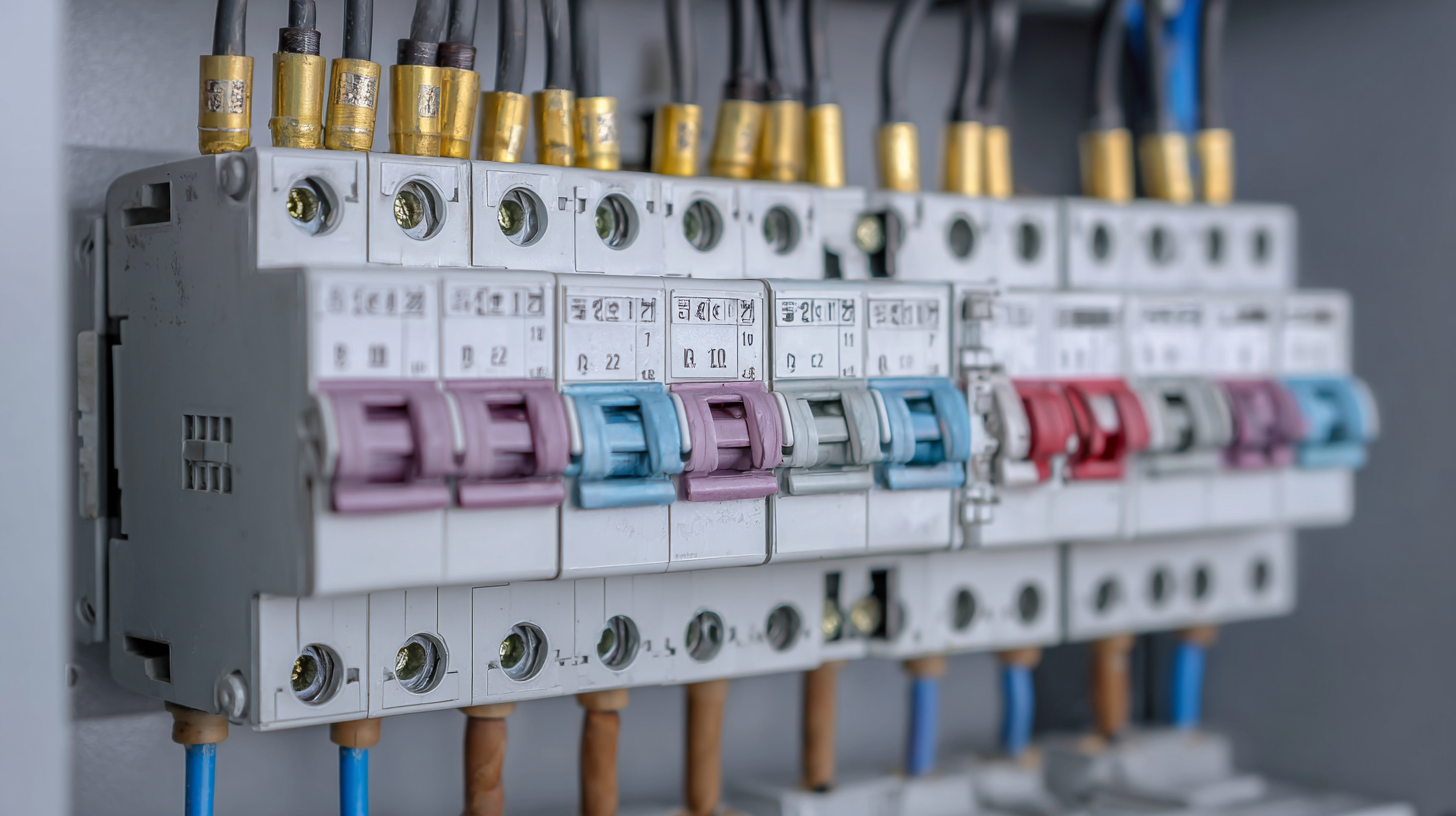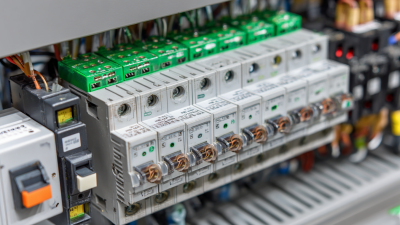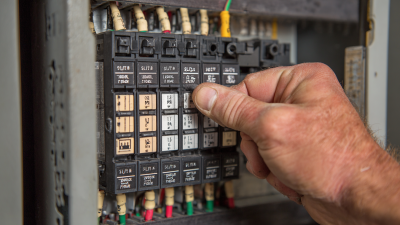Understanding the Importance of Home Circuit Breakers for Electrical Safety and Efficiency
Understanding the importance of home circuit breakers is crucial for ensuring electrical safety and efficiency in our daily lives. A home circuit breaker serves as a vital component of residential electrical systems, designed to protect both occupants and property from potential hazards associated with overcurrents and electrical shorts. By interrupting the flow of electricity during unsafe conditions, these devices not only prevent electrical fires but also contribute to the overall efficiency of electrical systems, thereby lowering energy consumption.

With a variety of types available, selecting the appropriate home circuit breaker is essential for maintaining a secure household environment. As we delve into the intricacies of home circuit breakers, we will explore their functions, benefits, and the necessity of regular maintenance to promote safety and reliability in modern homes.
How to Identify the Right Home Circuit Breaker for Your Needs
When it comes to safeguarding your home’s electrical system, choosing the right circuit breaker is crucial for both safety and efficiency. Start by assessing your home's electrical load requirements. This involves calculating the sum of the wattage of all electrical devices you plan to use. A circuit breaker should match or exceed this total to prevent overload. For instance, if your household appliances draw significant power, a higher-rated breaker may be necessary to handle the load without tripping frequently.

Additionally, consider the type of circuit breaker that suits your needs. Standard circuit breakers provide protection against overloads, while Ground Fault Circuit Interrupters (GFCI) and Arc Fault Circuit Interrupters (AFCI) offer enhanced safety features for specific areas like bathrooms and kitchens. These breakers can prevent electric shocks and reduce the risk of fires caused by arc faults. Consulting with a licensed electrician can help ensure the selection of the proper circuit breaker, taking into account local building codes and safety standards to create a secure electrical environment in your home.
How to Properly Install a Circuit Breaker for Maximum Safety
When installing a circuit breaker, proper adherence to safety standards and guidelines is crucial to ensure maximum protection against electrical hazards. Circuit breakers, whether solid-state or mechanical, play a significant role in managing electrical flow and preventing faults that could lead to fires or equipment damage. Proper installation also includes careful consideration of the breaker's voltage rating—ranging from low to high voltage—as well as the environment, whether indoors or out. Each installation scenario requires specific components and configurations to ensure optimal function.
Market analysis reveals a growing demand for circuit breakers, driven by an increasing focus on electrical safety and energy efficiency. The segment of low-voltage circuit breakers, for instance, is particularly prominent, highlighting the need for adequate protection in residential and commercial applications. Additionally, with the rise of smart technology, the market for solid-state breakers is expanding as they offer enhanced features and reliability compared to traditional mechanical options. Understanding the intricacies of these products, including their rating capabilities—such as those rated up to 500V—will enhance installation practices and elevate safety standards across all electrical installations.
How to Test Your Circuit Breaker for Efficiency and Functionality
Testing your circuit breaker regularly is vital for ensuring electrical safety and efficiency in your home. Begin the process by turning off the main power supply, then visually inspect the breaker for any signs of wear, damage, or corrosion. If the breaker is producing a burning smell or seems unusually warm to the touch, it's time to replace it. To check functionality, reset the breaker by flipping it to the OFF position and then back to ON. This should restore power; if it trips immediately, consult a professional.
**Tips:** When testing your circuit breaker, ensure all connected devices are unplugged to avoid unnecessary trips. It’s also a good practice to familiarize yourself with your home's electrical panel and breaker labels, which can help you quickly identify and address issues. Conducting this test every six months can help catch potential problems early.
Additionally, consider investing in a multimeter to measure voltage levels. After resetting the breaker, use the multimeter to confirm that the voltage is consistent with normal ratings. This inspection will not only enhance your confidence in the functionality of your electrical system but also ensure that it operates efficiently without any risk. Regular maintenance of your circuit breaker contributes significantly to a safer home environment.

How to Troubleshoot Common Circuit Breaker Issues at Home
Troubleshooting common circuit breaker issues at home is essential for maintaining electrical safety and efficiency. According to the National Fire Protection Association (NFPA), faulty circuit breakers are involved in over 18,000 residential electrical fires each year. Being able to identify and resolve these issues can help prevent dangerous situations. One of the most common problems homeowners face is a breaker that trips frequently. This can often indicate an overloaded circuit. A quick fix is to redistribute the load among different circuits to balance the demand on your electrical system.
Another frequent issue is a breaker that won’t reset. This may be caused by a short circuit or an electrical fault. To troubleshoot this, first turn off all appliances on that circuit to ensure it’s not an overloaded device. If the breaker still refuses to reset, it’s crucial to contact a licensed electrician, as this could signify a more serious issue that requires professional intervention.
**Tips:**
- Regularly inspect your circuit breakers for any signs of wear or damage, such as corrosion or discoloration.
- Keep your circuit breaker panel organized by labeling each breaker according to its function to facilitate easier troubleshooting in the future.
- Install surge protectors for sensitive electronics to prevent overloading and minimize damage during electrical surges.
Home Circuit Breaker Issues: Frequency of Occurrence
How to Maintain Your Circuit Breakers for Long-Term Electrical Safety
Maintaining circuit breakers is crucial for ensuring long-term electrical safety and efficiency in both residential and commercial settings. With the global circuit breaker market projected to grow from $24.41 billion in 2025 to $42.85 billion by 2032, boasting a compound annual growth rate (CAGR) of 8.37%, the importance of reliable and well-maintained circuit protection devices cannot be overstated. Regular maintenance ensures that circuit breakers function correctly, preventing overloads and potential electrical fires.
One key aspect of maintaining circuit breakers involves periodic inspection and testing. This includes checking connections for signs of wear, ensuring that the tripping mechanisms are functioning, and verifying that the circuit breakers are suited to the electrical load of the system. Additionally, advancements in technology have led to the development of upgraded circuit breaker models, contributing to enhanced safety features and operational reliability. For example, recent innovations in air circuit breakers can provide improved performance while ensuring compliance with the latest safety standards. By prioritizing maintenance and staying informed about technological upgrades, users can enhance the safety and efficiency of their electrical systems.
Understanding the Importance of Home Circuit Breakers for Electrical Safety and Efficiency
| Dimension | Details |
|---|---|
| Function | Prevent electrical overload and short circuits |
| Common Ratings | 15A, 20A, 30A, 40A |
| Maintenance Tips | Regularly test monthly, clean the panel, inspect for rust or corrosion |
| Lifespan | Typically 15-20 years with proper maintenance |
| Signs of Failure | Frequent tripping, physical damage, inability to reset |
| Safety Certifications | UL, CSA, EN |
Related Posts
-

Understanding the Challenges of Miniature Circuit Breakers in Modern Electrical Systems
-

7 Facts You Didn't Know About ACB Breakers: The Best Choices for Your Electrical Needs
-

Ultimate Guide to Choosing the Right Surge Protection Circuit Breaker for Your Needs
-

9 Essential Tips for Choosing the Right Home Circuit Breaker
-

A Comprehensive Guide to Understanding Molded Case Circuit Breakers in Industrial Applications
-

Ultimate Guide to ACB Breaker Selection and Maintenance for Optimal Performance








